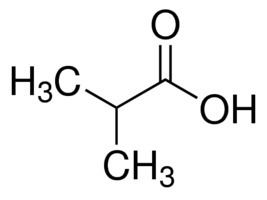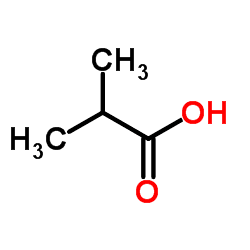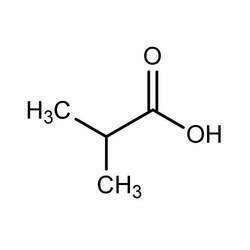Formula C4H8O2 Molar mass 88.11 g/mol Melting point -47 °C | Density 970 kg/m³ Boiling point 155 °C | |
 | ||
Isobutyric acid, also known as 2-methylpropanoic acid, is a carboxylic acid with structural formula (CH3)2-CH-COOH. It is found in the free state in carobs (Ceratonia siliqua), in vanilla and in the root of Arnica dulcis, and as an ethyl ester in croton oil. Isobutyric acid is an isomer of n-butyric acid; they have the same chemical formula C4H8O2 but a different structure.
Contents
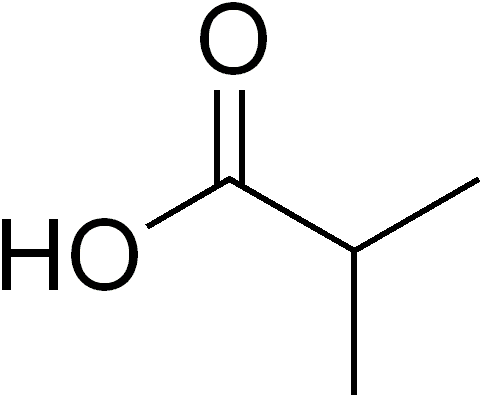
Production
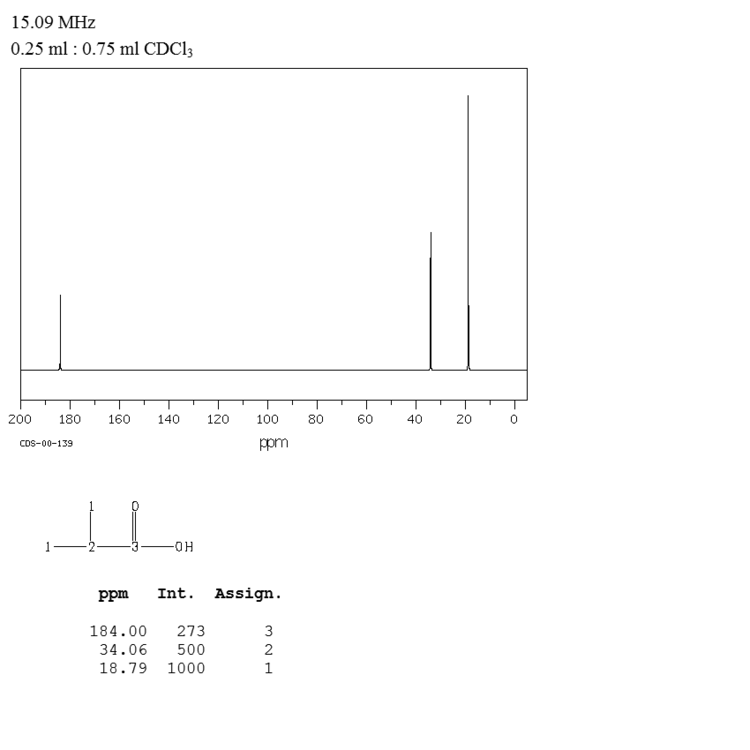
Isobutyric acid may be artificially prepared by the hydrolysis of isobutyronitrile with alkalis, by the oxidation of isobutanol with potassium dichromate and sulfuric acid, or by the action of sodium amalgam on methacrylic acid. Isobutyric acid is a liquid under common conditions with a somewhat unpleasant smell. It boils at 155 °C and has a specific gravity is 0.9697 (0 °C). When heated with a chromic acid solution to 140 °C, it decomposes to form carbon dioxide and acetone. Alkaline potassium permanganate oxidizes it to α-hydroxyisobutyric acid, (CH3)2-C(OH)-COOH. Its salts are more soluble in water than those of butyric acid.
Biological production
Isobutyric acid can also be manufactured commercially using engineered bacteria using a sugar feedstock.
Isobutyric acid is a retained trivial name under the IUPAC rules.
